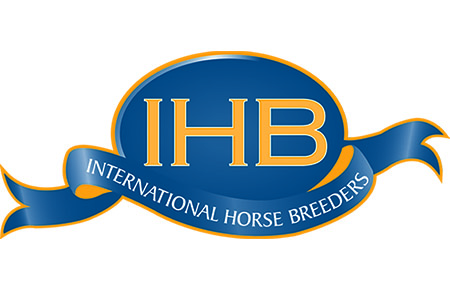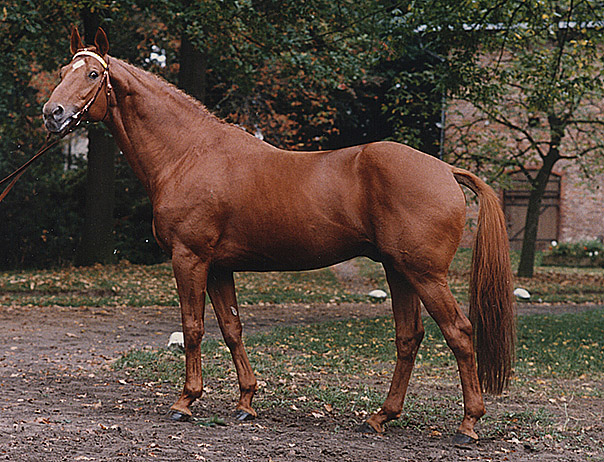
Christopher Hector examines the welcome return of the Hanoverian B line founded by Bolero…
After some years in the wilderness, the B line has returned to Hannover with a vengeance. At the most recent Hanoveraner stallion licensing, no less than nine of the 65 colts up for selection were by B line stallions.
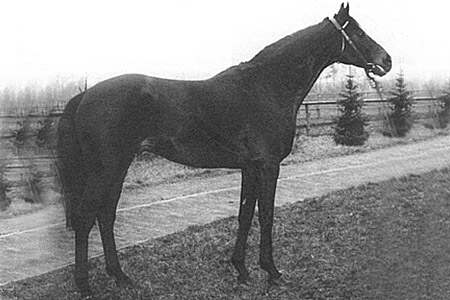
Black Sky xx
The acceptance into the stallion ranks at the State Stud Celle in 1979 of founding father of the B line, Bolero, marked a significant break-through in the development of the modern dressage horse. For starters, stud director, Dr Burchard Bade had to ‘break’ the rules to bring him into the fold. His breeding was officially prohibited by the Hanoverian Stud Book regulations of the time, which regulated against the breeding of a mare by a Thoroughbred to a Thoroughbred stallion. Bolero was by the elegant English Thoroughbred, Black Sky, imported to Germany in 1972 out of Baroness is by another English Thoroughbred, Bleep. Despite this he was allowed to breed and stood for nine seasons at the stallion station Landesbrück from 1979, until his death from heart failure in 1987 at the age of 12. Remember at this time, breeding was much more local, without chilled semen, the stallion covered only the mares from his ‘own’ district, but Bolero was lucky he clicked with the concentration of daughters of Grande and Duellant in the area.
Right from the start, the hunt was on for a stallion son. Bolero sired 47 licensed stallions, including the champion of his year, Buenos Aires, but most disappeared without trace. His most influential stallion sons have been Brentano II (Grande) and Bismarck (Maat I).
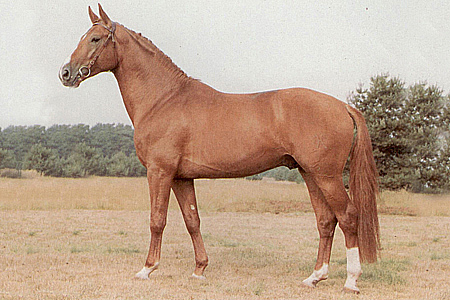
Bismarck
Bolero’s Thoroughbred blood contributed to the elegant quality of his descendants. This was important as the emerging, and lucrative market, of largely female dressage riders, demanded a horse that was more refined and easier to ride. Plus it helped if the horse was pretty.
It was only some years later, thanks to the researches of Florian Sitzenstock from the University of Goettingen that the link between Thoroughbred blood and dressage talent, was decisively proven, though canny breeders sensed that much earlier.
Sitzenstock examined the pedigrees of a total of 217,475 Hanoverian foals from 1980 until 2006, and found that the average proportion of Thoroughbred blood in the foals was 23%, with an increase from 20% in 1980 to 25% in 2006. During that period, the percentage of horses with no Thoroughbred blood, dropped from 40% to 4%!
story continues below the advertisement
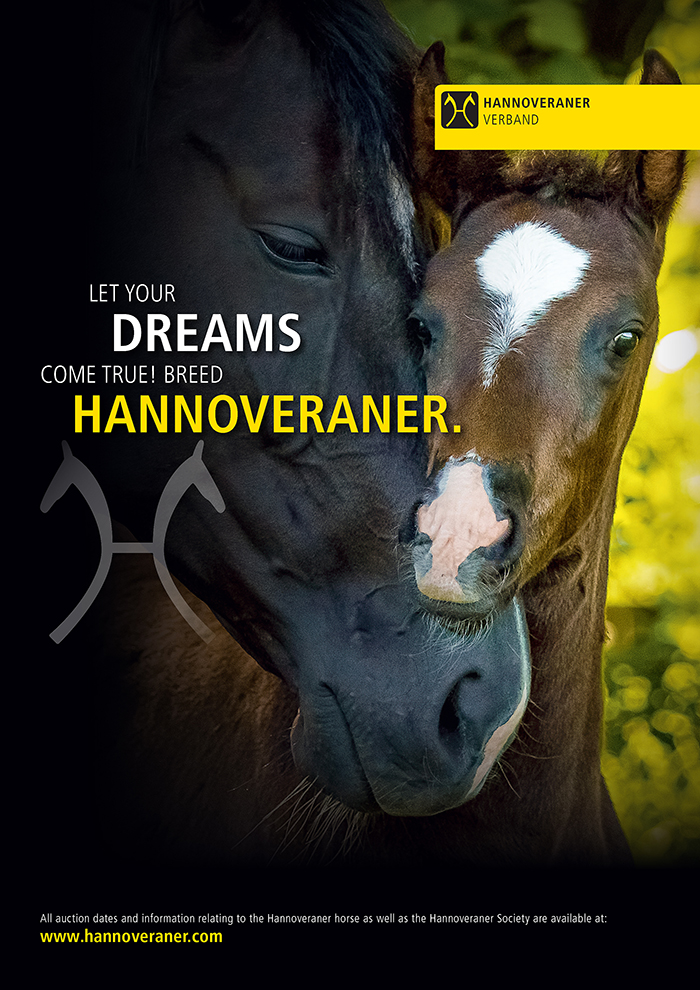
The Thoroughbred has been very important in improving conformation in Hanover. The Hanoverian breed values for conformation are positively influenced by Thoroughbred blood up to a proportion of 62.5%. The Hanoverian values show a positive Thoroughbred influence for frame, saddle position and type while the front legs in particular benefitted. Crossbreeding with a Thoroughbred in the first two generations positively affected the breed value for dressage and both exterior breed values.
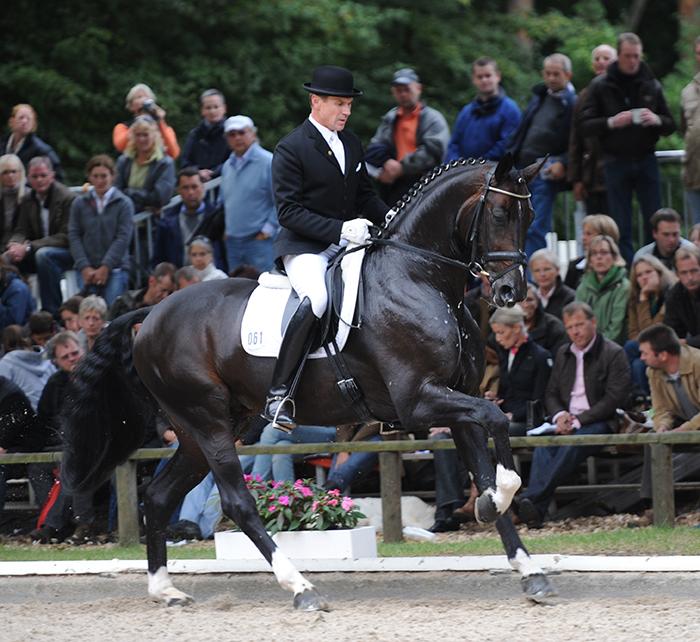
Benetton Dream
For a while, the B line more or less disappeared from the scene, dominated as it was by the big three D, R and W. Brentano II continued to produce fine foals, and very good broodmares, but it wasn’t until a son, Benetton Dream, dazzled the spectators when he won the stallion class at the Bundeschampionate in 2007, that a significant son appeared.
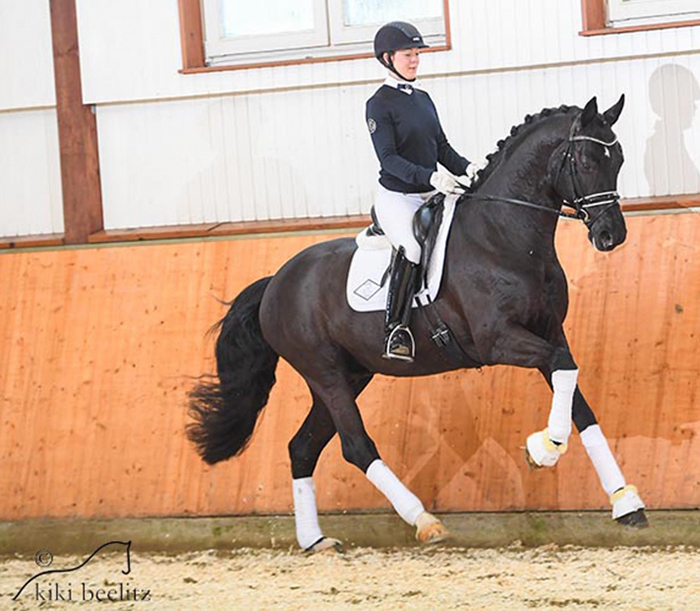
Bon Coeur
Benetton Dream, out of a Rotspon mare, went on to compete Grand Prix, he has also produced an exciting son, Bon Coeur (Sandro Hit). Bon Coeur was the sire of five horses at the 2022 World Young Dressage Horse championships, and his son, Bon Courage from a Vivaldi / Rhodiamant mare, dominated the 2022 Hanoverian stallion pre-selection, with ten colts participating in pre-selection and five going forward to the licensing. Bon Courage was the premium colt at the 2019 licensing, and like his sire, stands at Gestüt W.M.
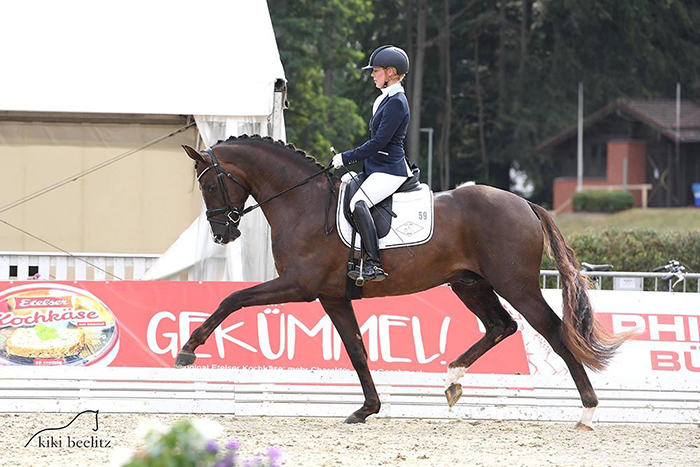
Bon Courage was the sire of these colts at the Hanoverian licensing
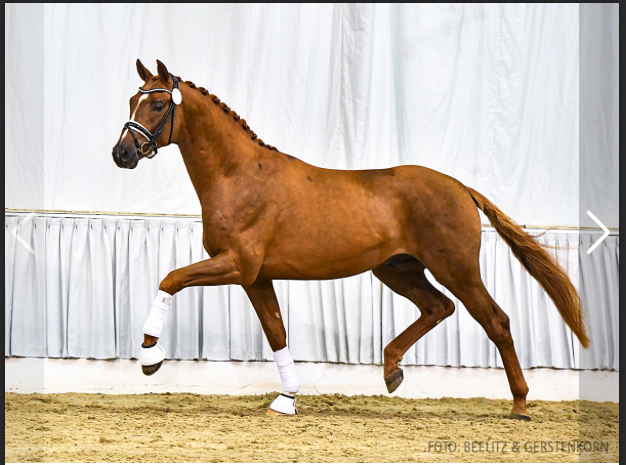
out of a Compliment mare, Premium
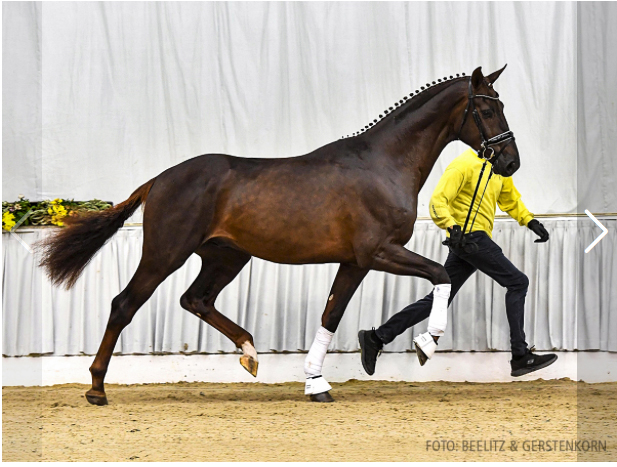
out of a Floriscount mare, not licensed
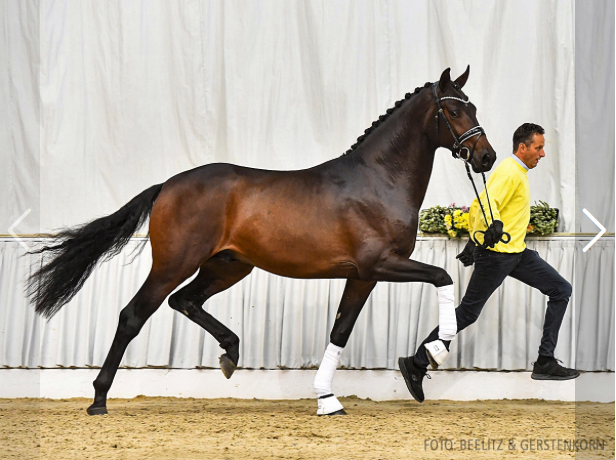
out of a Fürst Romancier mare, licensed
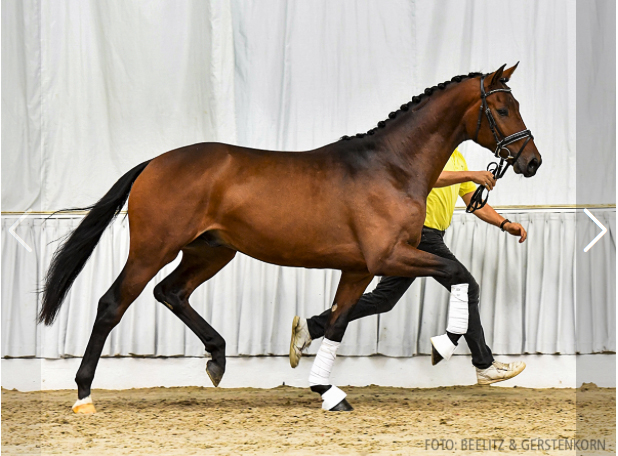
out of a Lauries Crusador mare, Premium
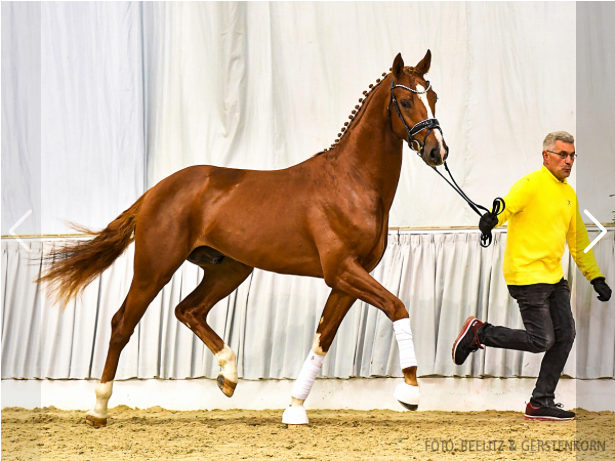
out of a Royal Classic mare, not licensed
Bismark’s main claim to fame comes through his son Breitling, and the keen eye of Breitling’s breeder, Wolfram Wittig who was prepared to swim against the tide in his stallion selection:
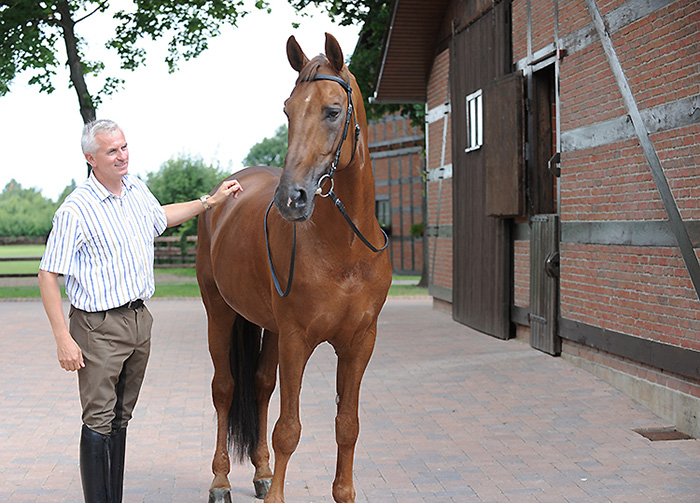
Wolfram and Breitling relax at home…
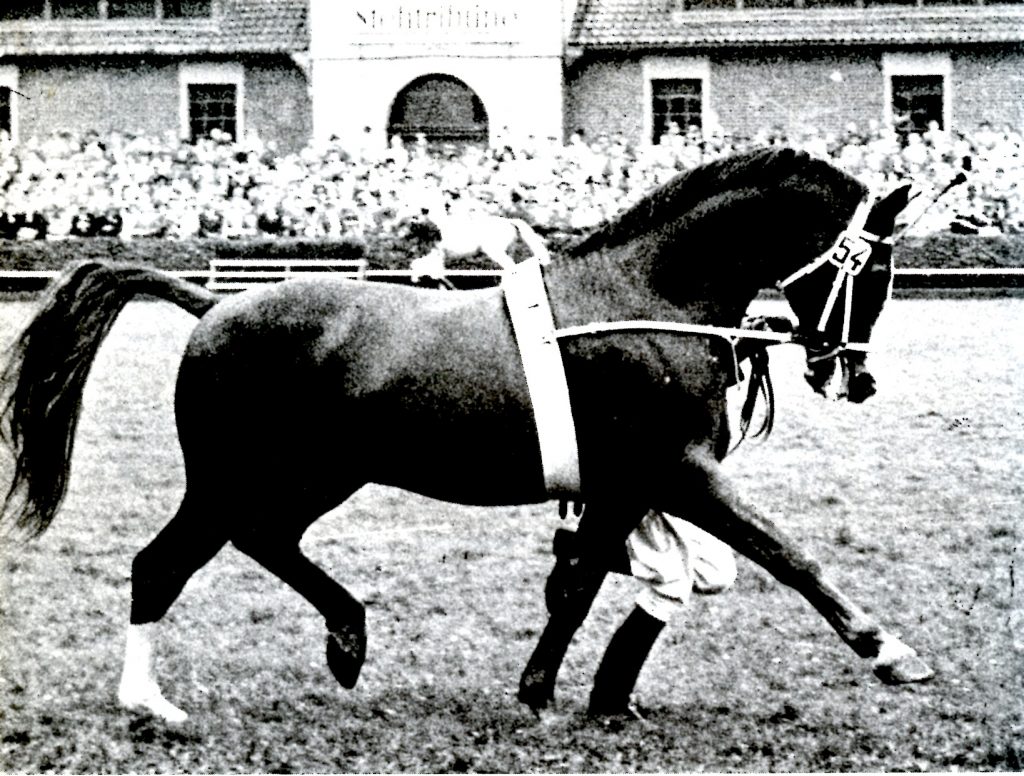
Duellant
“Bismark was Bolero / Duellant, and the most important bloodline for me in dressage was Duellant. But it is very difficult to find stallions with Duellant. Bismark was a very old fashioned stallion, but the movement was unbelievable and he was totally balanced in all three gaits, so I used him for my breeding program.”
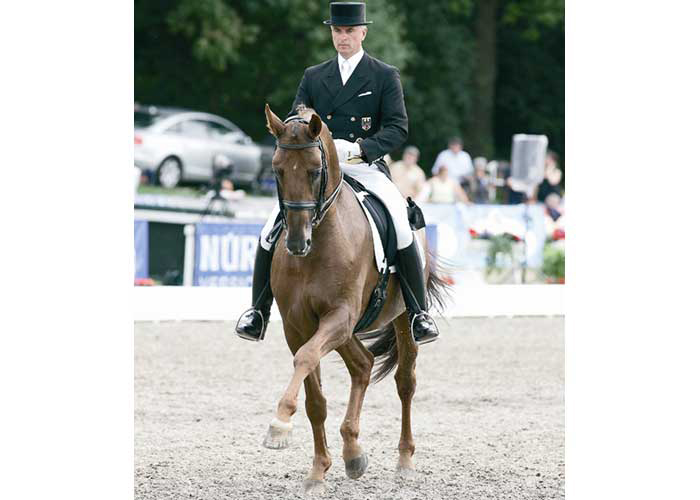
Breitling W
Bred to Wolfram’s Maat I mare, Maja, Bismark produced Breitling who is arguably the stallion who has produced more Grand Prix progeny to mares covered than any other dressage stallion in history. Once again Breitling’s influence has been limited because he was considered ‘old fashioned’.
Wolfram told me: “The most mares he ever covered in one year was about 80 when he was placed at Schockemöhle’s, that was the maximum…”
And some stallions covered 800 in one year…
“What is important is not to sell the semen, what is important are the products, and what is so good about him is that he produced useful horses.”
Breitling was the sire of eleven dressage competitors who won more than €10,000, the most successful of which was Burlington FRH (Rohdiamant) who won €110,198.
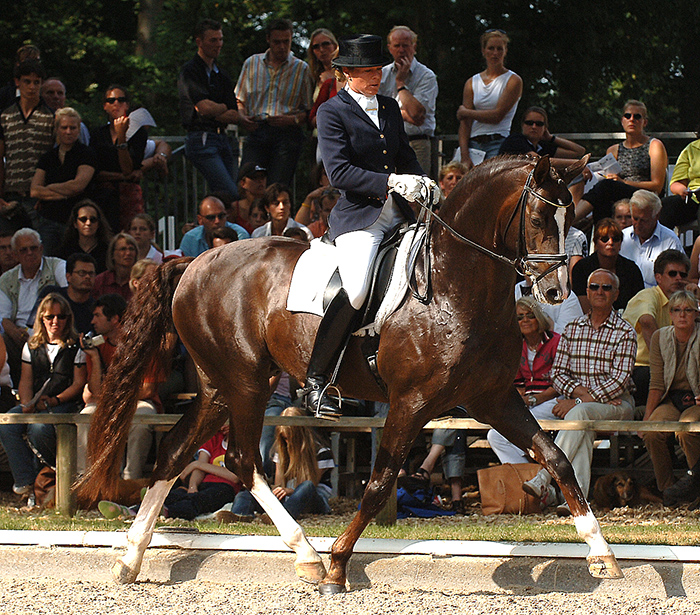
The next B line stallion to set the world on fire was Belissimo M, who was born in 1999. Belissimo was by Beltain, a son of Bolero, out of the Grande mare, Gänseliesel. Beltain was another B line stallion largely shunned by mare owners when he was alive.
Belissimo was out of a Romadour II mare, which may lend more weight to Wolfram’s theory about the importance of Duellant.
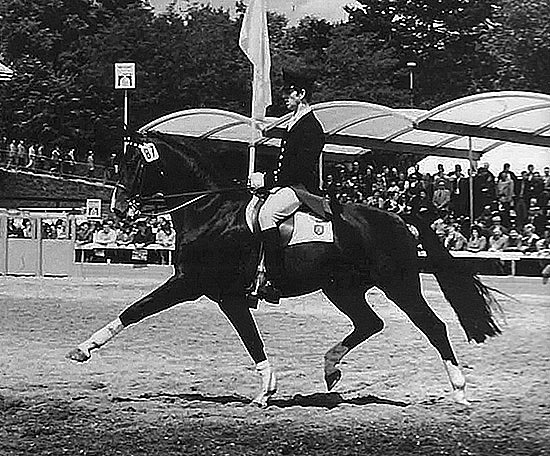
Romadour II
Romadour II is one of the most significant of modern Westfalien sires – but his breeding is clouded by mystery. He is listed as a son of Romulus I, a descendent of the famous Ramzes aa through Radetsky – however it has been established that his dam was covered not only by Romulus, but also by Duft III (a stallion who was later removed from the Westfalien State Stud due to his poor fertility). Certainly Romadour II is very different in terms of conformation – and in the progeny produced – to his (full? half?) brother, Romadour I. Romadour II’s progeny tended to be chestnuts with a lot of white, and a lot of movement, Romadour II and Duft III were both bays with a lot of white, while Romadour I and Romulus I were rather plain. Duft III was the son of another flashy chestnut with a lot of movement – Duellant.
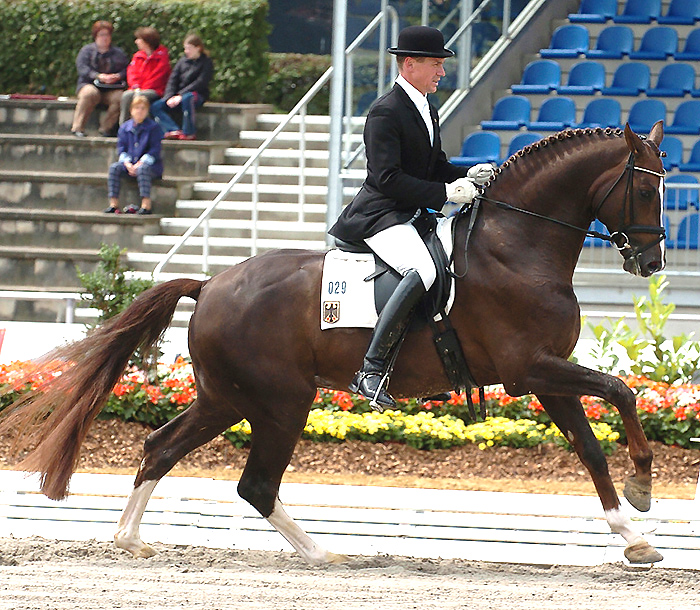
Belissimo at the World Young Horse Championships
Belissimo’s spectacular career began in In 2002 when he achieved the highest result in a 30-day test to that date, scoring the perfect 10.0 four times. In 2003 he became Bundeschampion of the four-year-old stallions in Warendorf and qualified for the Young Horse World Championships in Verden, where he finished fifth in the final. Belissimo continued his success at the Bundeschampionate for second in the final of the six-year-old dressage horses when he bungled one flying change even though he looked far the best horse in the class.
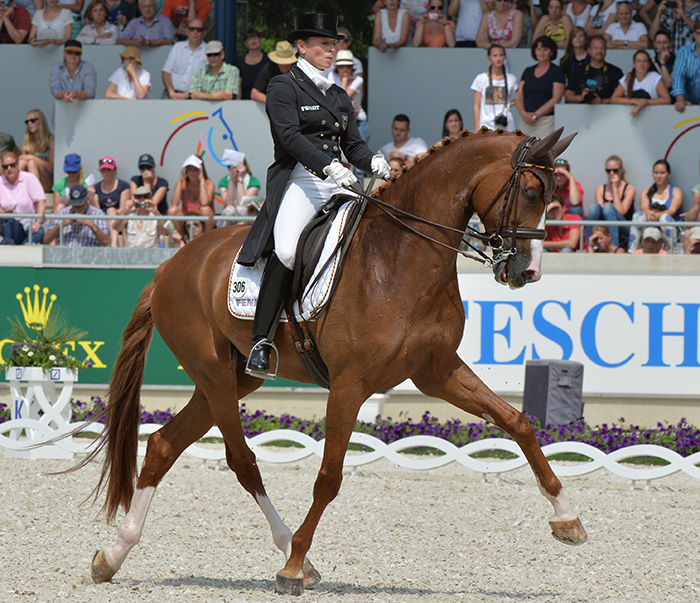
Bella Rose and Isabell Werth
As a sire, Belissimo has been a star, crowned Hanoverian Stallion of the Year for 2018, he has been the sire of 1115 competitors, with winnings of €1,198,706, with Isabell Werth’s mega-star, Bella Rose, responsible for €320,534 on her own.
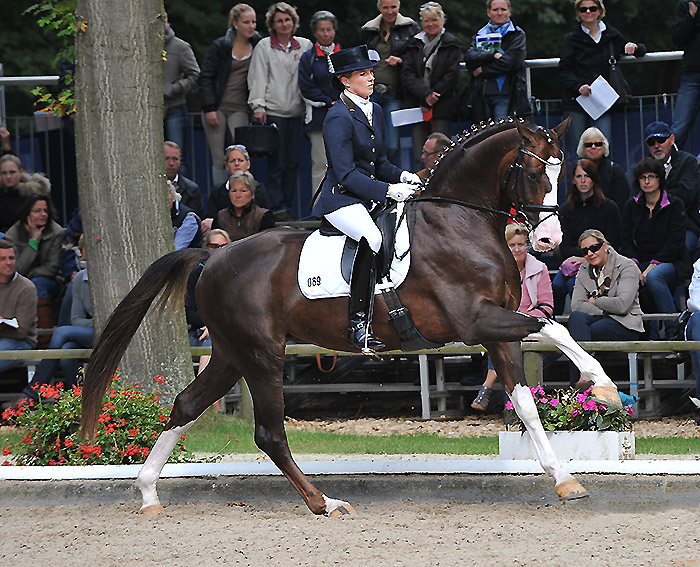
Benicio
Belissimo’s most famous son, was another Bundeschampionate star, Benicio who was out of a mare by the half blood, Velten Sohn (Velten xx). Benicio was the hero of the 2011 Hanvoerian licensing, before he went on to be crowned Six-Year-Old champion at the Bundeschampionate.
Benicio won his performance test in a 9.88 in dressage with 10s for walk, trot and canter, but before that he had caught the eye of Ian Callender-Easby who had founded his Callaho Warmblood Stud in 1999, not in Lower Saxony, or Gelderland, but in the sweetveld savannas of the Kalahari in South Africa. It’s perhaps not the obvious location, but meet Ian and you soon discover an individual who is perfectly comfortable swimming against the tide and making his own waves…
The stud also set up to breed international level competitors in all three disciplines, jumping, dressage and eventing, with considerable success so far. The stud has an impressive line-up of imported stallions headed by Lissabon (Lordanos / Sion / Contender) whose export to Africa caused considerable heart-burn in Germany and lead to his son, Lissbon being thrust into the limelight as a dressage sire.
I set out one evening to find out how Ian managed to acquire Benicio, as always with stallions, therein hangs a tale…
“After the success of Belissimo we went to Germany, convinced we needed a son of his. Jacob Fourie was my stud manager at the time and he was very dressage oriented, he had ridden and won Grand Prix tests. Jacob and I had a policy of we don’t influence each other. We did this with a couple of the stallions we bought. He goes out and does his work, and I do my own assessment for three or four days, however long it takes, then we come back and we have to agree on one stallion. We both came back with this squib called Benicio!”
Squib?
“It was interesting, I said to Jacob, our budget is €60,000 max. Again, our policy was when we’d made our decision, Jacob had the budget and I’d leave the auction hall so that I can’t get emotional and say, more more more… I spoke to the auctioneer, Günter Freimer, who is now the manager of our farm in Bremen, and Günter said there is no way you can afford the horse, because FRH wants to buy him for Isabell. I quietly upped my budget from 60 to 90 but I didn’t tell Jacob this. I left and was hidden out the back. Bidding started the chairman of the Verband was bidding on behalf of FRH. It stopped at 55, then I bid 60, eventually it went to 90, my bid. We had our horse and took him back to South Africa, then we realised he’d grown, because when we bought him he was just sixteen hands.”
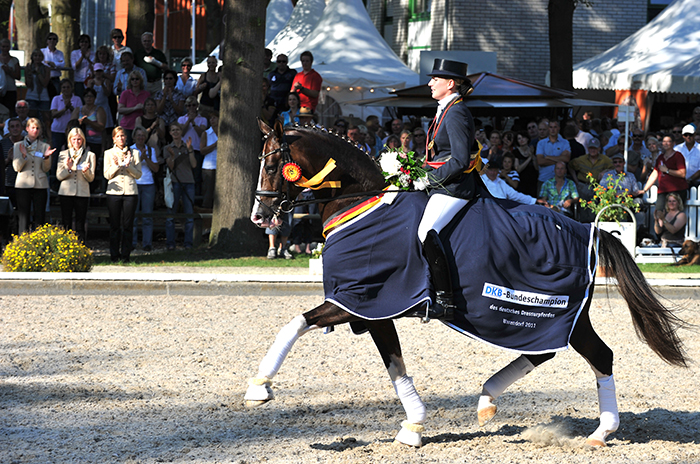
Benicio and Anna Fiebelkorn
“I had two concerns – one was that the horse would be produced too rapidly because with the extreme movement too much too soon was a big concern of mine. We sent him back to Europe and looked for someone to ride him, that’s how we got to Anna Fiebelkorn and her instructions were to really take it slow. She went to some little shows, and won a qualification and asked, Can I take him to the Bundeschampionate? I said, yes, Anna, but no tricks or pushing him. She won the first go round, and then went on to win the six year old championship. That’s the story.”
What mares have you found he fits best over?
“We froze a lot of semen before we sent him back, but at home we have limited choices. In Germany, it seems he needs mares that are a little bit bigger, and they can be too old fashioned, even better with the more refined types.”
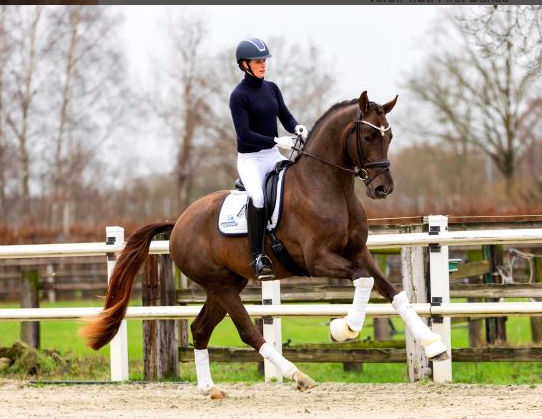
Benicio continues to produce top progeny – at the 2022 Adelheidsdorf 50-day test, the second highest score went to Be My Dancer, by Benicio out of a Vivaldi / Ferragamo mare.
Ian explains the genetic attraction of Benicio: “What we liked about him from the beginning was that there was no Donnerhall, no Weltmeyer, it was completely our breeding and that appealed to us because we could use all kinds of popular blood without an inbreeding component. After the Bundeschampionate Paul Schockemöhle made a very substantial offer, but I thought, this is the one opportunity we’ll ever get to have something fantastic, does that make more sense than money? I would have appreciated the money, but even more special was to have a horse like that.”
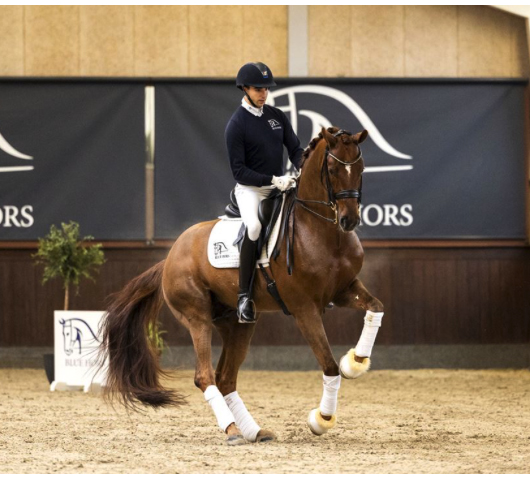
Baron by Benicio, sire of this colt at the 2022 licensing
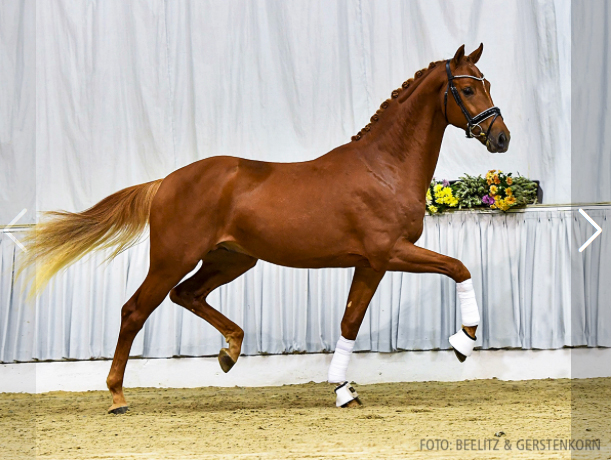
Benicio has been a successful stallion maker in Germany and at the recent Hanoverian stallion licensing he was represented by Baron (Sir Donnerhall I), with a son out of a Rubin Royal mare, and Bonds (Dancier) who put four into the lineup.

Bonds, sire of these colts at the licensing…
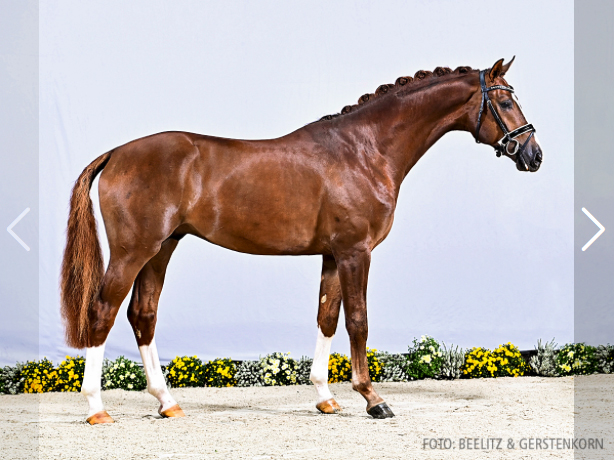
out of a Dancier mare, Licensed
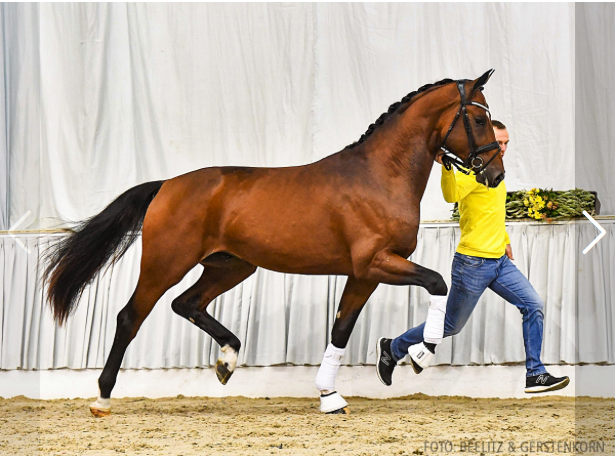
out of a Dante Weltino mare, Premium
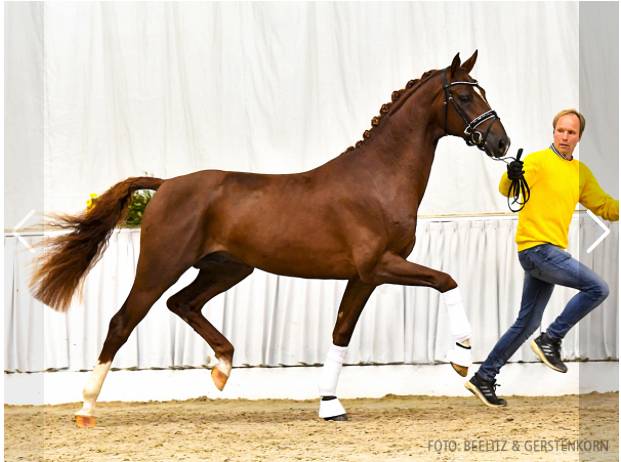
out of a Dimaggio mare, not licensed
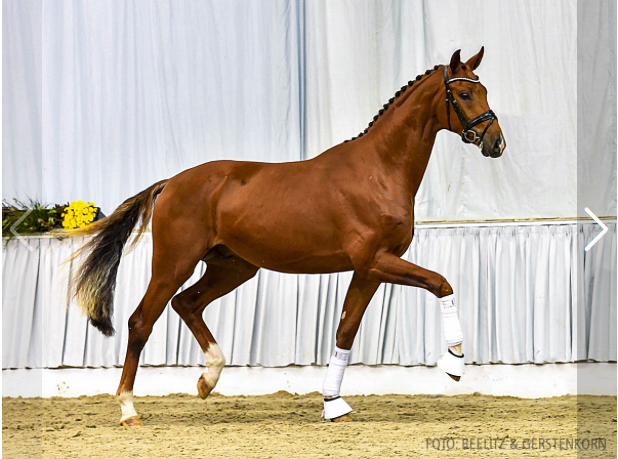
out of a For Romance mare, Premium
For a long time breeders have been aware that a good B line stallion was an asset in any breeding program, the only trouble was, finding a good one, now it would seem, mare owners are spoilt for choice…
There was further gloss for the B line with the crowning of this year’s champion at the 2023 Oldenburg licensing. The star was Brioni by Bon Courage out of a Sezuan / Dimaggio mare, bred by Jürgen Fetzer and owned by Sönke Rothenberger’s company Rothenberger ventures. Sönke seemingly has developed a taste for very expensive mens’ fashion, first Fendi, now Brioni…
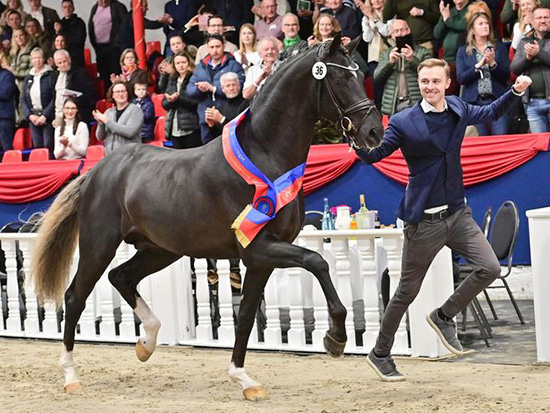
Sönke and Brioni
Who would buy the young stallion Helgstrand?Glock?? In the end it was the Swiss, Adrian Gasser, of Gestut Schönweide in the north of Germany, who purchased the colt for the record price of €1,250,000.
ends
And there’s a great selection of ‘B’ Team members available to breeders in Australia from International Horse Breeders – www.ihb.com.au

Benicio
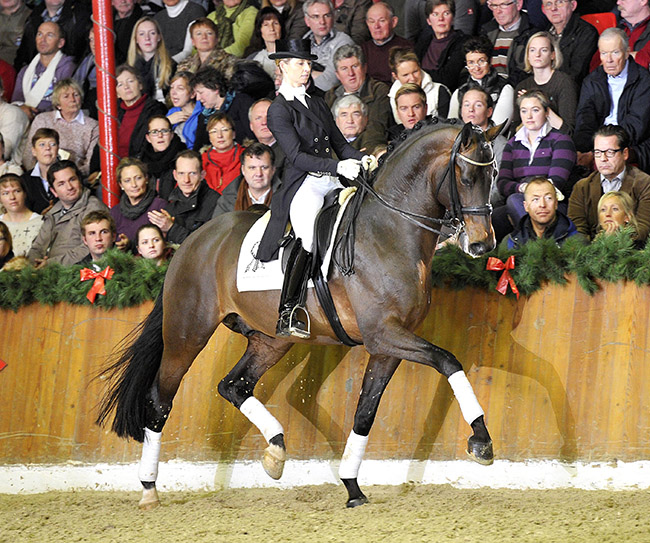
Bordeaux
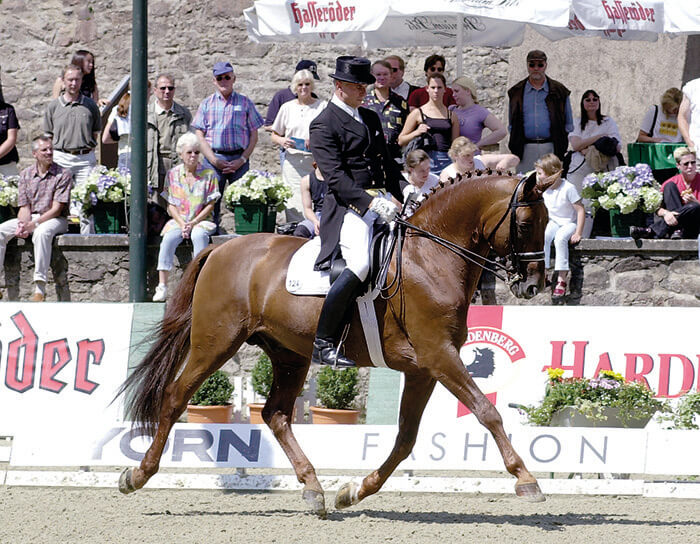
Breitling W
And more!!! Go to www.ihb.com.au and find the right stallion for your mare this season
